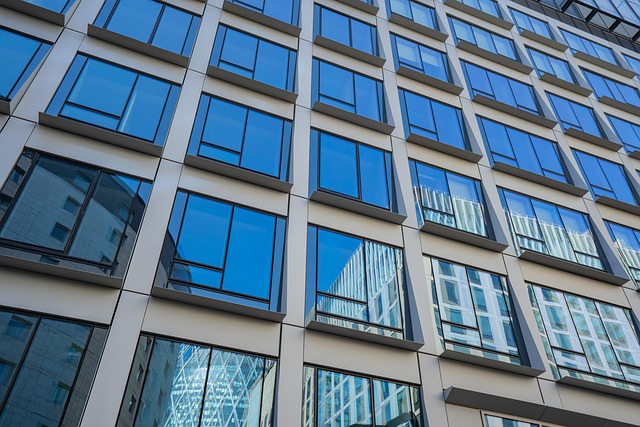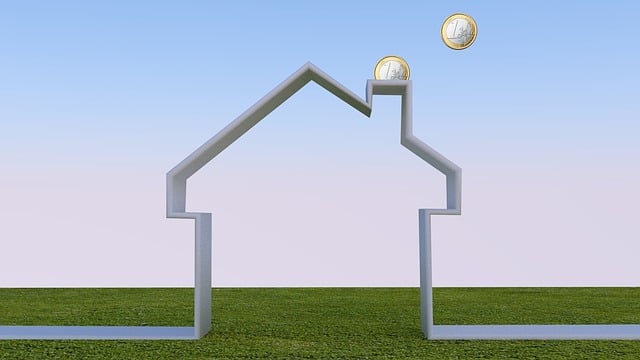Ceiling-mounted destratification fans are crucial for improving HVAC efficiency in large industrial and commercial spaces by tackling thermal stratification, leading to better temperature distribution. These fans enhance air circulation, reduce energy consumption, and contribute to sustainable practices. Proper installation, including optimal mounting height and angle, ensures maximum benefits. Regular maintenance is essential for longevity, while future designs may incorporate enhanced energy savings, quieter operation, and smart building automation integration to cater to sustainability demands.
Ceiling-mounted destratification fans are transforming the way we optimize heating, ventilation, and air conditioning (HVAC) systems. This efficient technology plays a pivotal role in reducing energy costs and enhancing sustainability in buildings. By circulating air uniformly across a space, destratification fans mitigate temperature variations, improving overall HVAC performance. This article explores the mechanics of ceiling-mounted destratification fans, their remarkable energy savings potential, installation considerations, maintenance tips, and emerging trends shaping the future of sustainable building design.
- Understanding Ceiling-Mounted Destratification Fans: Their Role in HVAC Systems
- Energy Efficiency and Cost Savings: How These Fans Contribute to Sustainable Buildings
- Installation, Maintenance, and Future Trends: Ensuring Optimal Performance for Longevity
Understanding Ceiling-Mounted Destratification Fans: Their Role in HVAC Systems

Ceiling-mounted destratification fans play a pivotal role in HVAC (Heating, Ventilation, and Air Conditioning) systems by addressing the issue of thermal stratification—the tendency for warm air to rise and cool air to sink, creating uneven temperature distribution. This phenomenon is particularly pronounced in larger spaces like industrial facilities and commercial buildings, leading to inefficiencies and increased energy consumption. Destratification fans are designed to counteract this effect through strategic air circulation. By redistributing warm air evenly throughout the space, these fans enhance HVAC efficiency, ensuring that every area benefits from optimal temperature control.
In commercial applications, where energy savings and cost reduction are paramount, ceiling-mounted destratification fans offer a practical solution. The technology behind these fans facilitates air mixing, promoting better heat transfer and reducing the workload on HVAC systems. This, in turn, leads to significant energy savings without compromising on comfort or air quality. Whether it’s industrial cooling or maintaining a pleasant environment in an office space, destratification fans contribute to sustainable practices by optimizing air circulation and enhancing overall HVAC efficiency.
Energy Efficiency and Cost Savings: How These Fans Contribute to Sustainable Buildings

Ceiling-mounted destratification fans play a significant role in enhancing energy efficiency and reducing costs within sustainable buildings. By addressing the issue of thermal stratification, where warm air tends to rise to the ceiling while cooler air remains near the floor, these fans contribute to improved HVAC (heating, ventilation, and air conditioning) efficiency. When warm air is redistributed throughout the space, destratification fans ensure optimal temperature control, thereby reducing the workload on cooling systems.
This technology promotes better air circulation and mixing, which is particularly beneficial in larger spaces like industrial facilities or commercial buildings. In these settings, ceiling-mounted fans can effectively combat the natural tendency for warm air to pool at the highest points, leading to substantial energy savings. By actively redistributing air, destratification fans enhance overall HVAC performance, resulting in a more comfortable indoor environment while minimizing operational costs.
Installation, Maintenance, and Future Trends: Ensuring Optimal Performance for Longevity

The successful integration of ceiling-mounted destratification fans relies on careful installation to ensure optimal placement for warm air redistribution. Proper mounting height and angle are crucial factors in achieving effective thermal stratification, maximizing air circulation, and minimizing energy consumption. Professional installers should consider the unique characteristics of each space, including ceiling height, room layout, and HVAC system design, to guarantee efficient destratification fan performance.
Regular maintenance is equally vital for longevity and optimal performance. Dust and debris buildup can impede airflow, reducing energy savings and HVAC efficiency. Scheduled cleaning and inspections ensure that air mixing technology functions at peak capacity, providing the best temperature control in both industrial cooling and commercial applications. As the demand for sustainable solutions continues to grow, future trends in destratification fan design will likely focus on enhanced energy-saving capabilities, quieter operation, and smarter integration with building automation systems, further amplifying their role in reducing HVAC energy costs.
Ceiling-mounted destratification fans emerge as a powerful tool in the pursuit of energy efficiency within HVAC systems. By efficiently redistributing warm air, these fans significantly reduce energy costs and contribute to sustainable building practices. As we look towards the future, ongoing advancements in fan technology promise even greater environmental benefits and improved performance, making ceiling-mounted destratification fans an increasingly vital component in modern building design.
